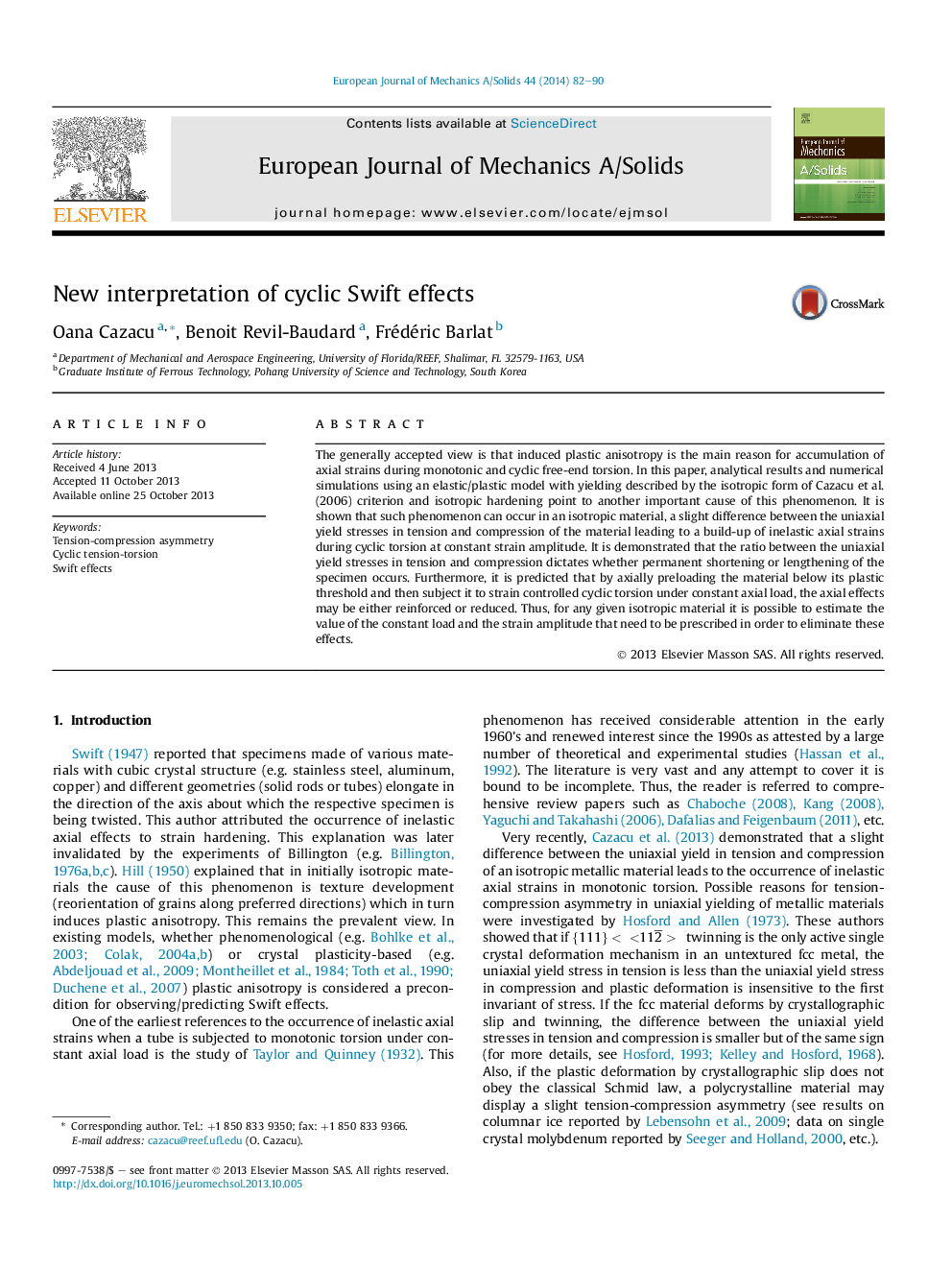| کد مقاله | کد نشریه | سال انتشار | مقاله انگلیسی | نسخه تمام متن |
|---|---|---|---|---|
| 774098 | 1463203 | 2014 | 9 صفحه PDF | دانلود رایگان |

• Isotropic yield criterion and isotropic hardening predicts strain ratcheting.
• Role of strength differential on accumulation of inelastic axial strains in torsion.
• Accumulation of inelastic axial strains can be controlled.
The generally accepted view is that induced plastic anisotropy is the main reason for accumulation of axial strains during monotonic and cyclic free-end torsion. In this paper, analytical results and numerical simulations using an elastic/plastic model with yielding described by the isotropic form of Cazacu et al. (2006) criterion and isotropic hardening point to another important cause of this phenomenon. It is shown that such phenomenon can occur in an isotropic material, a slight difference between the uniaxial yield stresses in tension and compression of the material leading to a build-up of inelastic axial strains during cyclic torsion at constant strain amplitude. It is demonstrated that the ratio between the uniaxial yield stresses in tension and compression dictates whether permanent shortening or lengthening of the specimen occurs. Furthermore, it is predicted that by axially preloading the material below its plastic threshold and then subject it to strain controlled cyclic torsion under constant axial load, the axial effects may be either reinforced or reduced. Thus, for any given isotropic material it is possible to estimate the value of the constant load and the strain amplitude that need to be prescribed in order to eliminate these effects.
Journal: European Journal of Mechanics - A/Solids - Volume 44, March–April 2014, Pages 82–90